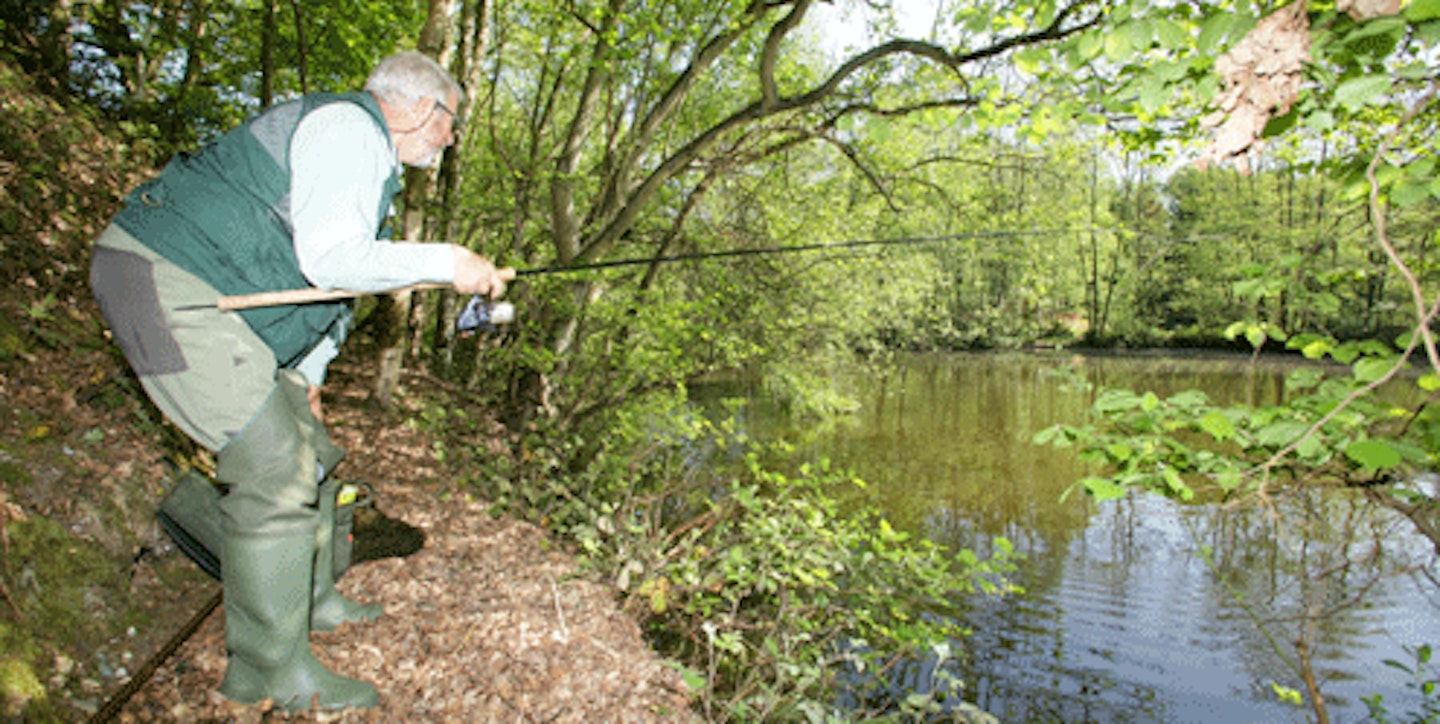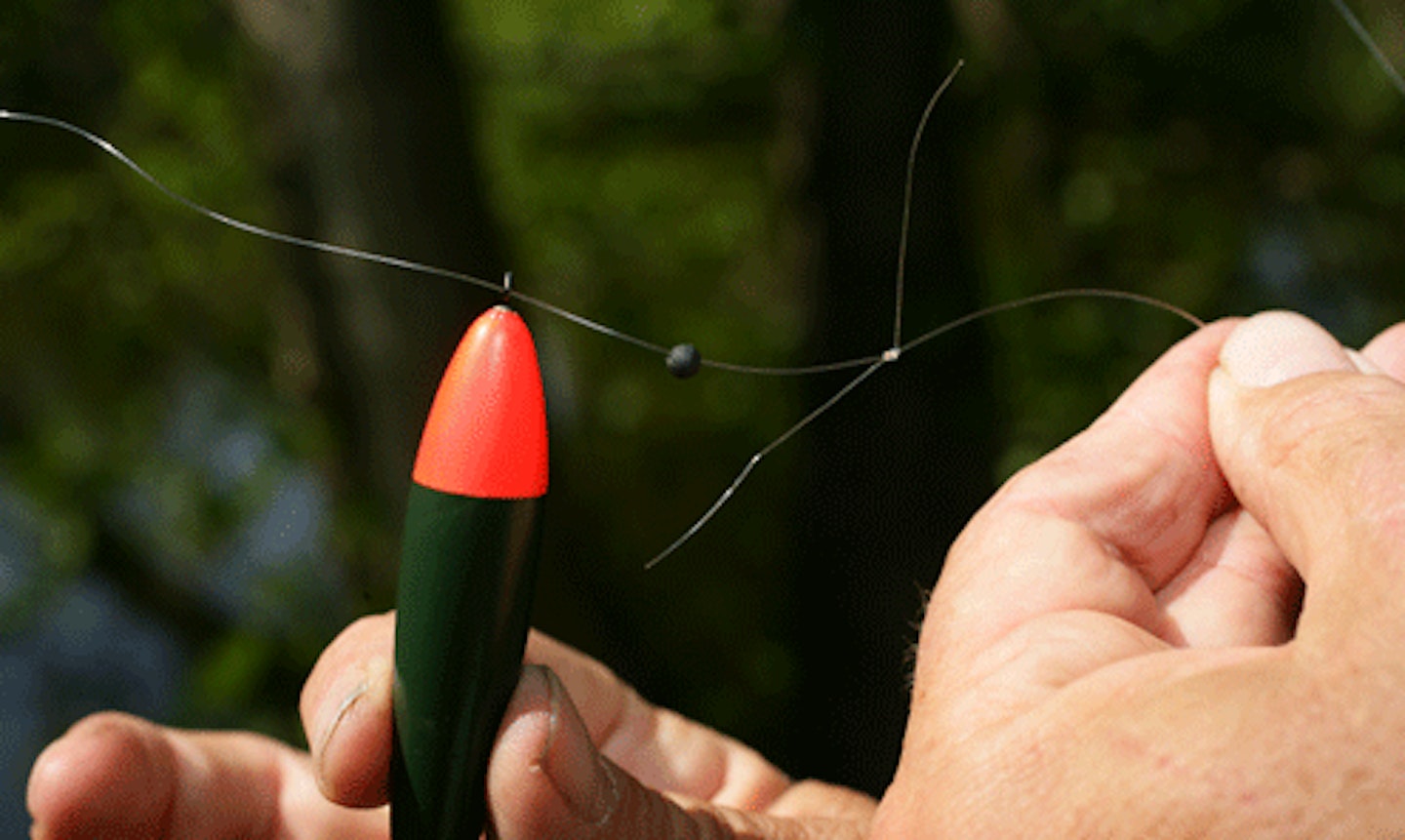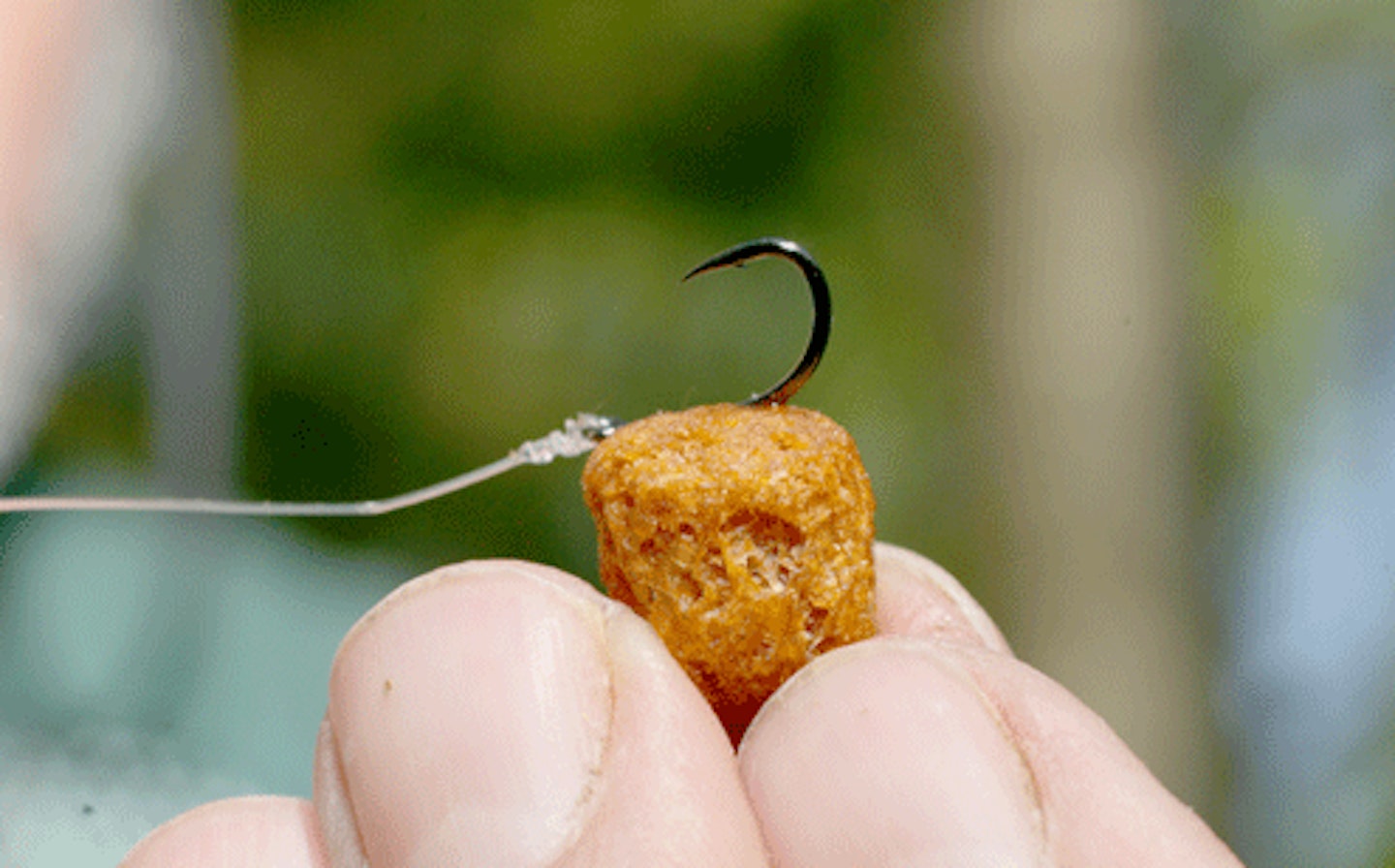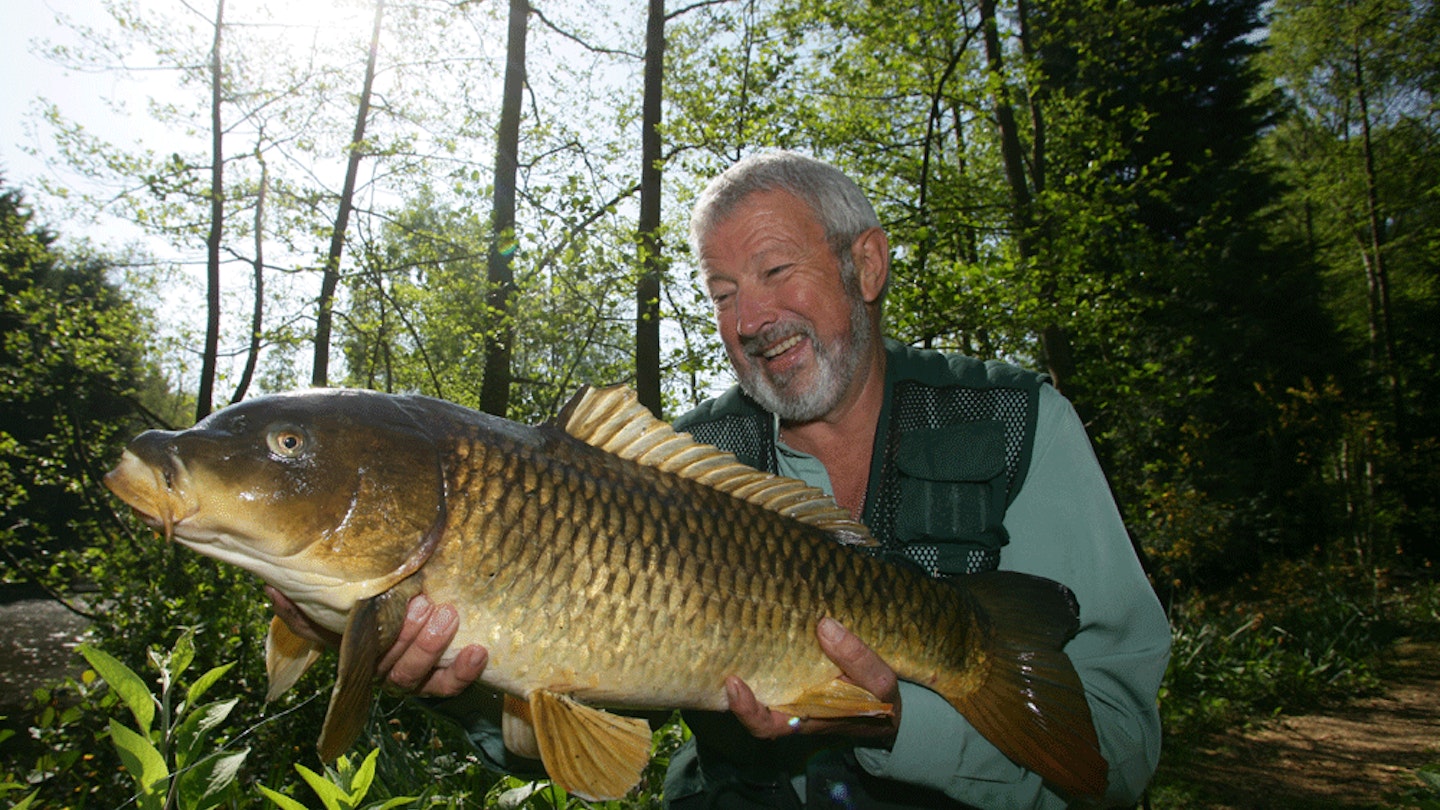Of all the many different fishing techniques, surface controller float fishing and freelining for the likes of carp, chub and even orfe offers the most challenging and rewarding sport.
The amount of different tricks you can try to tempt a bite are endless, and you have to be on your toes when you’re trying to tempt a specimen carp into sucking in the bait with your hook attached.
Here’s a brief guide to what you need to surface fish, the baits you ought to try and how to get the most from this devastating summer technique…
TACKLE FOR SURFACE FISHING
The rod that you need for fishing baits on the surface with depend upon the distance you are fishing. If you are freelining right under the rod tip or at very short range then a through action rod will be best that will absorb the initial lunge of the fish when using such a short line between the rod tip and the hook.
An Avon rod would be perfect for short range freelining as they tend to bend right through to the butt. These rods, in the 1.25lb test curve bracket are absolutely perfect for smaller carp, up to the 10lb bracket, but if you are intent on hitting into larger fish then you’ll need to step up a little. There are Avon rods that have 1.75 and even 2lb test curves – those are better suited to bigger fish taken at short range.
If you are targeting carp on the surface well out in the middle of the lake, opt for a general purpose 2.5lb test curve carp rod. That will give you the flexibility in the tip section to launch the controller float the distance required, but there will be enough backbone power in the middle and butt section of the rod to drive the hook home and play the fish accordingly.
The reels for surface fishing needn’t be anything special… a reliable and powerful; fixed spool reel will suffice so long as it is loaded up to the brim with an appropriate strength of mono mainline. I would suggest 6lb mainline for smaller carp, and 10-12lb for specimens.

FLOATS FOR SURFACE FISHING
Beyond distances of around 10 yards you’ll need to use a float of some kind to give you the additional weight required to be able to cast your lightweight floating bait. There are many different surface fishing floats available – often called controller floats.
Although there are many different versions on the market, there are two main types of surface float – self-cocking controller floats and bubble floats. They are both as effective as each other. There are also homemade surface floats too, consisting of simple lengths of varnished dowel or peacock quill, that lie flat on the water. I call these flat float controllers.
FLAT FLOAT CONTROLLERS
These homemade floats are easy to create and when used they resemble twigs drifting on the surface. They make very little disturbance when they are cast and they are fairly well camouflaged – ideal for surface fishing. They do have their limitations though – because they are so light they cannot be cast very far and are therefore only useful for close range work.
They can be made from peacock quill, reed stems, bamboo strips or, better still, varnished 1/3 inch hardwood dowel – nice and cheap. I simply cut off various lengths, sand down the edges so they won’t damage the mainline and varnish them. They are locked onto the line using a couple of strips of thick silicone tubing and positioned 2-6ft away from the hook.
CONTROLLER FLOATS
These large and self-cocking floats are ideal for distances beyond 10 yards – some can quite easily be cast 50 yards if needs be.

Wilson-controller.gif
My own Tenpin controller was developed after I tried to tempt a few carp basking some 35 yards out on my own lake, under some overhanging willows. I couldn’t quite get the distance needed to place a bait close to the carp, so after a little experimentation the very first self-cocking, extremely buoyant Tenpin controller was created.
There are many other similar style of controller floats available, but they all do one thing – they give you enough weight and control over your rig so you can present it right where you need it.
These floats need locking onto the mainline, 2-6ft from the hook, in one of three ways. Firstly I thread the line through the top-most eye of the controller, following that with a bead, then either use a swivel as a link between mainline and hooklength, or use a powergum stopknot, or simply tie the hooklength to the mainline using a four-turn water knot, but leave the tag ends long so the float cannot travel down the line to the hook.
BUBBLE FLOATS
These clear, plastic floats are about the size of a golf ball or chicken’s egg. They have two plugs that allow water to enter the float to give it some casting weight. You simply pull out the two plugs, immerse the float and allow water to pour in until you reach the desired level. Obviously you’ll need to leave some air inside the float so that ir remains afloat. Now insert the plugs again and you’re ready to fish.
These floats are attached to the line in one of two ways. The versions having two eyes are simply threaded onto the mainline and locked in place with a split shot or a swivel. The more advanced semi-fixed styles are locked in place by slipping the silicone sleeve over the mainline/hooklength swivel.
BAITS FOR SURFACE FISHING
There’s quite a few to choose from here – some are great as feed, others are better as hookbaits, while some can be used for both.

Good old Chum Mixer dog biscuits, bread and pop-up boilies are by far the most commonly used surface fishing baits. They can all be used as either feed or hookbait, and countless carp have been banked because of these three baits.
Other less common baits that make for great feed are cat biscuits, Rice Crispies, dry expander pellets, Corn Flakes and even popcorn. Marshmallows have been known to tempt a few carp off the top too, as have cork balls. They all have their place in the surface angler’s armoury because on their day they can all be useful.
HOOKING SURFACE BAITS
Because most surface baits are hard pellet-like baits, they can prove quite awkward to hook. Bread crust and marshmallows, on the other hand, are really easy – you simply push the hook through the crust or the outer skin and work it back through. Other harder baits have to be mounted differently…
Hair-rigging pop-up boilies is the best way, but you’ll need a good quality baiting needle to pass through the often rock hard boilies. When complete the bait should be as close to the hook as possible.
Dog biscuits can be hair-rigged also, but you will need to drill the baits first so you can pass your baiting needle through them. You can do that at home using a standard 2 or 3mm drill bit, or on the bank with a nut drill, available from most good tackle shops.
The easiest and just as effective way to hook Chum Mixers and any other large floating pellet is to use a bait band. These simply thread onto the shank or bend of your hook (it’s your choice as to where you want to position the bait) and then the bait is slipped inside the bait band. The band will offer enough grip to hold onto the bait through many casts, and there’s even a high chance that the bait band will still be attached to the hook after you’ve landed a fish.
